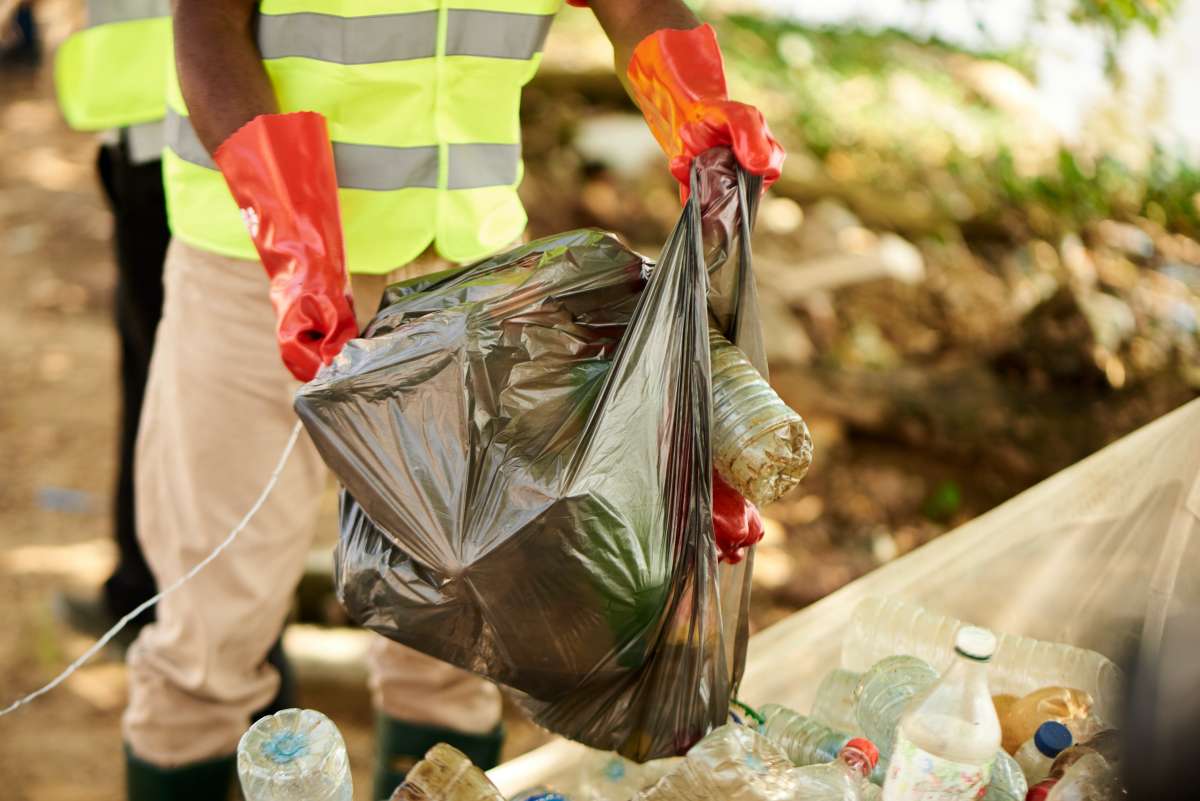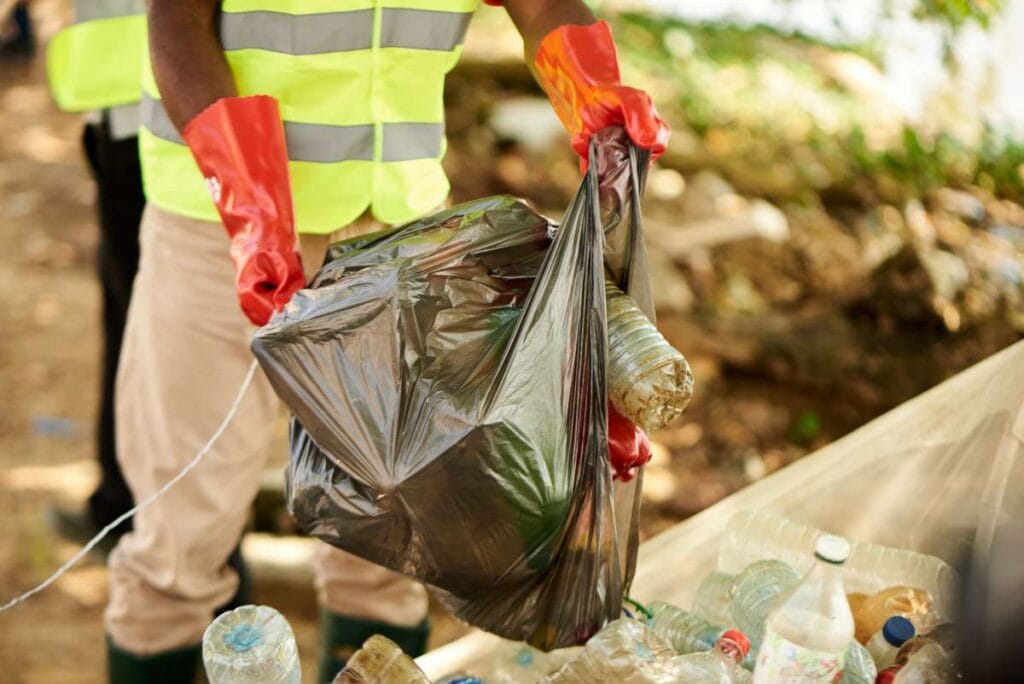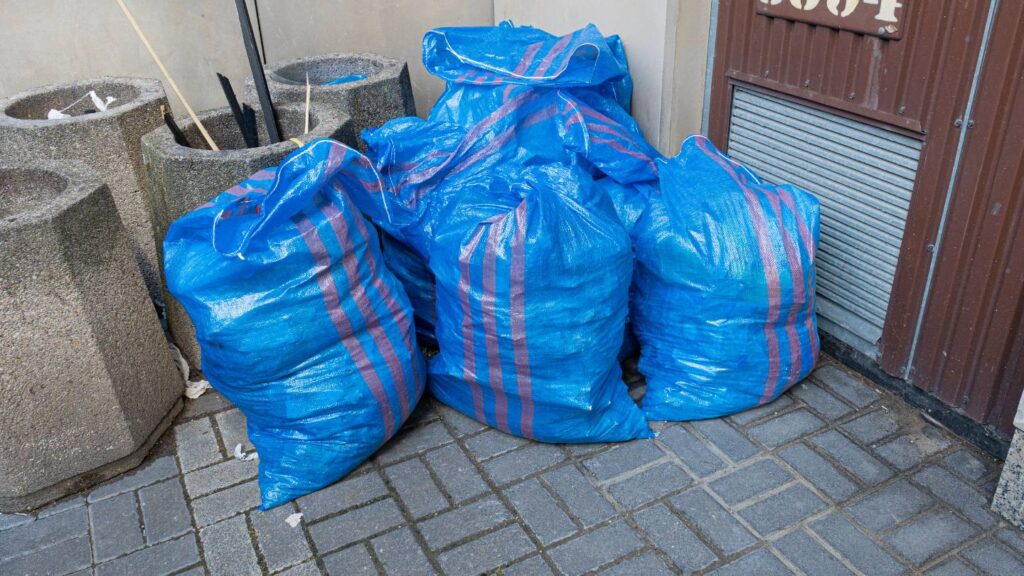Households, businesses, and ecosystems are all negatively impacted by food waste. When food is thrown away without proper management, it can cause a number of issues, such as an increase in glasshouse gas emissions, water contamination, and trash that needs to be thrown away.
This article will discuss some efficient methods for managing food waste to lessen its impact on the environment and will examine the effect that food waste has on garbage collection.
What Are The Problems With Food Waste?
The dinner on one's table is the result of many individuals' efforts. The food supply chain involves producing, preparing, storing, shipping, promoting, and selling food. However, food waste occurs in various ways before reaching the plate. Some food is lost or wasted during the manufacturing process. Insects and pests can damage crops, and bad weather can reduce crop yields. Transporting perishable food poses challenges, and supermarkets often dispose of unsold perishable items.
Food waste not only results in the loss of food but also of the resources used to produce it. Consider the plastic used to package unwanted frozen vegetables and the pollution generated by transporting fruits. The food industry consumes vast quantities of water, and water is wasted when food is thrown away. Approximately 45 trillion gallons (170 trillion litres) of water are lost annually due to food waste, an amount sufficient to supply every household worldwide for an entire year. Water conservation on a small scale could have a significant impact on meeting the needs of people living in water-scarce regions of the world.
Food waste also contributes to greenhouse gas emissions, especially when food ends up in landfills. Methane, a greenhouse gas, is generated as garbage decomposes in landfills. Food production and distribution also generate greenhouse gases. Livestock is a source of methane, and vehicles used to transport food emit carbon dioxide through their exhaust. Scientists estimate that reducing food waste could reduce greenhouse gas emissions from the food system by 11 per cent.
Finally, clearing land for agriculture can have negative impacts on biodiversity by destroying wildlife habitats. It is important to consider the efforts put into cultivating our food and its environmental impact.
How Is Food Waste Produced?
Food goes through numerous steps before it is sold, including cultivation, processing, sorting, packaging, transportation, marketing, and sales. The numbers show that food is wasted at every step of the process. Thus, the social cost rises further every time food is wasted because all the resources used in each stage of production are also wasted.
The weak links in the production chain can be more easily pinpointed by adopting a chain analysis perspective. Growing, harvesting, processing, and transporting the food to a retail outlet all fall under the "upstream" phase of the food supply chain. Food that has been processed and shipped to consumers and commercial markets is often wasted at the "downstream" stage of the supply chain, despite the fact that it may be safe to eat.
If food is wasted at a later stage in the production process, it has a greater environmental impact because more energy and natural resources are required to produce the final product. The United Nations Food and Agriculture Organisation (FAO) published a report in 2013 that examined the ecological effects of food waste around the world. Global trends in food waste were uncovered.
They discovered that in countries with middle to high incomes, food waste occurs in the "downstream" phase of production, at the level of consumers and commercial establishments. Lack of refrigeration, inadequate storage facilities, technical constraints in harvesting techniques, etc. were also found to be major factors in "upstream" food waste in developing countries.
Food Waste And Its Impact On The Environment

When You Waste Food, You Waste Water!
Wasted food is wasted water. Yes, throwing away food is the same as throwing away millions of gallons of water. Freshwater is primarily used for agricultural purposes. Due to rising demand from the world's millions of hungry and thirsty people, the availability of freshwater is rapidly dwindling. Whether it's for irrigation, spraying, ploughing, or anything else, we use a lot of water throughout the entire food production process. Water is also essential for farming and raising livestock, fish, and poultry.
Therefore, we waste millions of gallons of water that could have been used to cultivate and sustain plants every time we throw away food. Millions of tonnes of water are used to grow the fruits and vegetables we eat; similarly, meat and poultry are among the highest consumers of water due to their high water needs. Just as the water requirements of various crops and livestock vary, so too do these factors. A single chicken breast requires only 54 gallons of water to raise, but it takes 100 gallons to make a loaf of bread.
Finally, we estimate that 45 trillion gallons of water were used for wasted food. Seventy per cent of the world's freshwater is diverted to the agricultural sector.
When Food Is Thrown, Methane Is Released!
Tossed food ends up in landfills, where it rots and releases methane, a glasshouse gas 28 times more potent than carbon dioxide, into the atmosphere. We can prevent nearly 11 per cent of GHG emissions if we redirect food waste from landfills to a cutting-edge food waste treatment system.
The methane produced by decomposing food stays in the atmosphere for about 12 years, during which time it absorbs the vast majority of the sun's energy. Despite its short lifetime, methane is responsible for 20% of all emissions of glasshouse gases. When we compost less food, we release less methane gas into the atmosphere.
Food Waste Means Fuel Waste!
We use oil, diesel, and fossil fuel to cultivate, transport, store, and prepare our food. The machinery used in harvesting, transporting, sorting, cleaning, packaging, and preparing food all consume significant amounts of fuel. Oil, diesel, and other fuels are required for much of this machinery.
In addition, dumps are always located far from populated areas. Garbage trucks run on diesel or fuel to transport the waste long distances. Glasshouse gases are released into the atmosphere when these fuels are burned. There is a significant impact on the environment from both the back- and front-end fuel or oil waste caused by wasted food.
Food Waste Means Land Waste!
There are two types of food waste that result in wasted land. Both agricultural land and landfills are considered part of this category. Arable land and non-arable land are the two main categories of land. Crops can be grown on arable land, while non-arable land is not suitable for agriculture. These arid regions are ideal for raising cattle and other livestock.
The meat industry uses about 900 million hectares of land that is not suitable for agriculture. About 11.5% of the Earth's land area is devoted to farming. The land is fine for farming and raising livestock. Wasted food is the real issue. In addition to the food, there is always so much more that we throw away.
About 70-75% of 67 million tonnes of food waste ends up in landfills. This is an unnecessary burden on the land that has already been so productive in feeding us. Our ability to yield over time will suffer if we don't take care of losses soon.
Food Waste Harms Biodiversity!
The term "biodiversity" is commonly used to describe the extensive range of life forms present in any given ecosystem. Deforestation occurs for the purpose of growing or rearing livestock. Natural plant and animal life is threatened as a result. When there are more animals to feed, more undeveloped areas are transformed into pastures.
More livestock grazing on land results in less usable land. The land loses its natural beauty and diversity. Many people overfish the oceans without giving much thought to the impact this practice can have on biodiversity. After being rejected by consumers or stores due to not meeting quality standards, these fish are often left to rot in a truck.
Amazing Solutions To Food Waste

Balancing Food Production With Demand
Priority should be given to achieving a balance between food production and demand in order to lessen the issue of food waste. Reduce the amount of water, land, and other resources used for farming as a first step. Tools from the field of risk management can be put to use in the hospitality and restaurant sectors.
Having such a device will help ensure that managers and chefs are only making and serving meals that are in high demand or that have been specifically ordered. Large-scale food production has always led to food waste. Therefore, hotels and the entire food service industry should focus on small-batch production or employ the cook-to-order option in an effort to save food, labour, and money.
Bettering Food Harvesting, Storage, Processing, And Distribution Processes
As a second tactic, investing in cutting-edge technology and productive systems that enhance harvesting, warehousing, processing, and distribution is crucial. As a first step, redistribution can be used to get more food to areas with a shortage and less to areas with an abundance.
Governments and NGOs should subsidise harvesting, storage, and processing and educate producers on best practices. This is especially important in developing nations.
Food Waste Reduction Initiatives
Individuals, grocery stores, restaurants, and consumers can all do their part to lessen the environmental impact of our food supply. An easy way for individuals to reduce their impact on the food system is to prioritise affordability over absolute quality.
Ugly or imperfect produce is sometimes purchased and used in soups because it is still edible. It is possible to reduce food waste by reducing over-merchandising.
Consumers To Buy And Prepare Food With A Plan
Meal planning is a useful tool in the fight against food waste. In order to cut down on food waste caused by spoilage after long storage periods, shoppers should only make purchases in accordance with their plans or in small batches.
Food Recycling
Existing food recycling initiatives could benefit from improved technologies and processes. For example, you can make high-quality animal feed from recycled starch-rich foods like chips, bread, biscuits, and cereal.
Recycling the materials used to package food can help cut down on the wasteful use of virgin resources. Instead of sending it to a landfill, where it will decompose and release methane gas, it can be repurposed.
Foodprint Campaigns
Fishers, farmers, grocery stores, food processors, consumers, state and federal governments, and others can all benefit from campaigns to reduce their food waste footprint.
FAQs About Food Waste Removal
Food waste poses several concerns for rubbish removal because it contributes to the overall volume of waste that needs to be managed and disposed of. It adds to the strain on landfill space, increases transportation costs, and requires additional resources for proper handling and disposal.
Food waste has a significant impact on the environment. When food waste decomposes in landfills, it produces methane, a potent greenhouse gas that contributes to climate change. Additionally, the resources used in producing, processing, and transporting food are wasted when food is discarded, further exacerbating environmental issues.
Yes, food waste can contaminate water sources. Improper disposal of food waste, such as pouring it down the drain or disposing of it inappropriately, can lead to clogged pipes and sewage systems. This can result in water pollution and pose risks to aquatic ecosystems and human health.
By reducing food waste, less waste is generated, which means less rubbish that needs to be removed and disposed of. Implementing strategies such as better meal planning, proper storage techniques, and utilizing leftover food can help minimize food waste and lighten the load on rubbish removal services.
Effective food waste management includes practices such as composting, where food scraps are converted into nutrient-rich soil, or utilizing anaerobic digestion systems that can generate energy from food waste. Donating excess food to food banks or organizations that redistribute food to those in need is another impactful method to reduce waste.
Conclusion
Households, businesses, and ecosystems are all impacted negatively by food waste. There may be more glasshouse gas emissions, water pollution, and garbage to dispose of as a result. Efficient strategies should be employed to manage food waste in order to decrease its influence on the environment and investigate the impact that food waste has on garbage collection. When edible items are discarded and sent to landfills, they contribute to the release of glasshouse gases. It's crucial to think about the effects of farming on the environment, as clearing land for agriculture can have a severe effect on biodiversity.
From farming to processing to sorting to packaging to transporting to marketing to selling, food waste is created at every stage.
The Environmental Impacts of Food Waste Around the World was a 2013 publication by the United Nations Food and Agriculture Organisation (FAO). It was discovered that in middle- to high-income countries, the "downstream" phase of production (at the level of consumers and commercial establishments) is where the majority of food waste occurs.
The water used in agriculture, fisheries, and poultry husbandry is directly tied to the amount of food that is wasted. When we throw away food, millions of gallons of water are wasted, and methane, a glasshouse gas 28 times more potent than carbon dioxide, is released into the atmosphere.
Using an innovative food waste treatment system, we can divert nearly 11 per cent of GHG emissions from landfills. When we burn oil, diesel, or other fossil fuels, we also release harmful gases into the air that contribute to global warming. The environmental effects of this are substantial. Land used for farming and landfill space are also negatively impacted by food waste. The two primary types of land are arable land and non-arable land, with the meat sector using 900 million hectares of non-arable land.
India's yearly food waste totals 67 million tonnes, with 70-75% of that going to landfills. Deforestation and overfishing are two ways in which food waste threatens biodiversity. Risk management systems in the hospitality and dining industries can help reduce food loss, as can achieving a better equilibrium between food production and demand.
Hotels and restaurants could save money on ingredients and labour costs by switching to small-batch production or the cook-to-order model. The government and non-governmental organisations (NGOs) should fund the harvest, storage, processing, distribution, and the education of the producers.
Everyone from grocery stores and restaurants to customers can do their share to save money and food by putting value before perfection. Food waste can be reduced by the use of meal planning. Better technologies and procedures can help food recycling efforts succeed. The "foodprint" can be decreased by food waste efforts.
Content Summary
- Food waste causes negative impacts on households, businesses, and ecosystems.
- Throwing away food without proper management leads to increased greenhouse gas emissions, water contamination, and waste production.
- The food supply chain involves producing, preparing, storing, shipping, promoting, and selling food, but food waste occurs at every step.
- Food waste leads to the loss of food and resources used in its production, such as the plastic used to package unwanted frozen vegetables.
- Food waste contributes to greenhouse gas emissions, especially when food ends up in landfills.
- Reducing food waste could reduce greenhouse gas emissions from the food system by 11%.
- Clearing land for agriculture can have negative impacts on biodiversity by destroying wildlife habitats.
- Food waste occurs at every stage of the food supply chain, but weak links can be more easily pinpointed by adopting a chain analysis perspective.
- Food that has been processed and shipped to consumers and commercial markets is often wasted at the "downstream" stage of the supply chain, despite the fact that it may be safe to eat.
- Food wasted at a later stage in the production process has a greater environmental impact because more energy and natural resources are required to produce the final product.
- Lack of refrigeration, inadequate storage facilities, and technical constraints in harvesting techniques are major factors in "upstream" food waste in developing countries.
- Throwing away food is the same as throwing away millions of gallons of water.
- Freshwater is primarily used for agricultural purposes, and millions of gallons of water are used to grow the fruits and vegetables we eat.
- Meat and poultry are among the highest consumers of water due to their high water needs.
- A single chicken breast requires only 54 gallons of water to raise, but it takes 100 gallons to make a loaf of bread.
- Seventy per cent of the world's freshwater is diverted to the agricultural sector.
- Tossed food ends up in landfills, where it rots and releases methane, a greenhouse gas 28 times more potent than carbon dioxide, into the atmosphere.
- Redirecting food waste from landfills to a cutting-edge food waste treatment system could prevent nearly 11% of GHG emissions.
- Methane produced by decomposing food stays in the atmosphere for about 12 years and absorbs the vast majority of the sun's energy.
- Methane is responsible for 20% of all emissions of greenhouse gases.
- Composting less food releases less methane gas into the atmosphere.
- We use oil, diesel, and fossil fuel to cultivate, transport, store, and prepare our food.
- The machinery used in harvesting, transporting, and sorting food uses oil, diesel, and fossil fuel.
- Food waste means fuel waste because oil, diesel, and fossil fuel are used to cultivate, transport, store, and prepare food that will end up being thrown away.
- Efficient methods for managing food waste can lessen its impact on the environment.
- Food waste management methods include food recovery, source reduction, and composting.
- Food recovery involves donating safe and edible food to people in need.
- Source reduction involves reducing food waste at the source by purchasing only what is needed, using a shopping list, and preparing and storing food properly.
- Composting involves converting food waste into compost, which can be used as a soil amendment or fertiliser.
- Efficient methods for managing food waste are crucial to reducing its impact on the environment and to achieving sustainable development.








